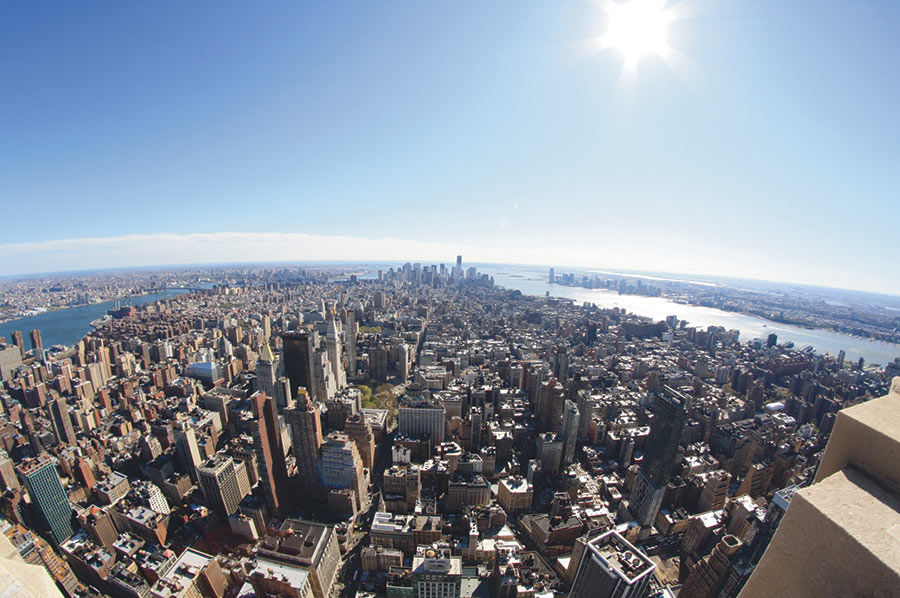
It has been quite a year for New York, and our landscape architecture profession. Less than a year ago, Superstorm Sandy flooded our city, killing 43 people, inundating 90,000 buildings and costing the city an estimated $19 billion in losses. Within the realm of the landscape, there were also losses that will have a lasting impact on New York City, as Sandy inundated 5,700 acres of parkland; almost 24 percent of all parks. And by 2050, more than 31 percent of New York Cityu’s parks will be within the 100-year floodplain and subject to flooding during extreme weather events. Outside of the inundation zone was not immune either, 20,000 park and street trees fell during the storm.
While this event has jolted a broad population of people to attention, it is certainly not the only risk we face. Hurricanes, Nor’Easters, and microbursts have occurred in the two years prior to Sandy, and while smaller, the cumulative effect is quite similar. Beyond extreme storms, our city is projected to experience more heat waves, more extreme rain events, and more coastal floods on an annual basis. We as a city need to look forward to how we can improve our city more broadly than just preventing the specific impacts of our worst Hurricane, as the risks of these annual changes are far more certain to occur than the exact culmination of factors that led to Sandy.
However, these impacts and projections for our open spaces and natural areas are more than just risks; they are opportunities. Many of our natural areas weathered the storm well, such as the wetlands along Jamaica Bay. Our green infrastructure installations outside of the inundation zone handled large volumes of rainwater. In addition, these open spaces provide services to us every day, not only in these extreme events. These successes suggest that there is much more that design and landscape can achieve in the face of climate risks.
Why our work matters. As Mayor Bloomberg states in the opening of NYC’s A Stronger, More Resilient New York, “We are a coastal city—and we cannot, and will not, abandon our waterfront.” We, as designers, must consider this a great challenge and opportunity, to rebuild New York City better than it had been. The fact that this same introductory letter references green infrastructure, wetlands, and dunes along with more traditional solutions suggests a huge shift in thinking about coastal landscapes, one that has been evolving for decades but has received additional focus over the past year. These terms are becoming better known by the public and politicians alike, and are now better understood with successes documented.
Climate risk must become an additional service that we ask of our landscapes, just as we have already looked to our landscapes to help cool the city, clean our air, increase our fitness, and health, and make our city more livable. There are many great examples of this type of work here in New York and around the world, many profiled in this issue.
Moving Forward. This work is complex and demanding. Often, it is difficult to strike a balance between projected sea levels 50 years from now and a desire for beauty and recreation. Our city has lost acres of wetlands, and for them to function as the coastal buffers that we desire, they require space, sound science, and patience. Given the complexity of our urban landscape, natural protective measures will not always be compatible with site constraints, but when the opportunity exists, it should be seized. These natural solutions provide us with myriad services throughout the year, not only when we are experiencing extreme weather; services that are focused on us, such as recreation, open space, and improved health, as well as to the broader ecological system that we call home. Providing benefits over a lifetime rather than only in times of great need is something few hardened engineered solutions can provide, thusly further justifying the importance of pursuing natural solutions.
Landscape architecture must rise to the occasion as a profession towards meeting these goals. We possess the tools and understanding to execute this type of work, and should continue to push for these types of projects. The nature of this work is inherently multi-disciplinary as well, requiring the infusion of hydrology, ecology, plant and soil science, engineering, and architecture. We need to strengthen our understanding of these fields to better incorporate them into our work. And we need to improve how we document our successes; working with research teams as well as cities to collect what works best for the complex urban system that is New York. None of this can guarantee that we will be fully prepared for the next Sandy, but perhaps that shouldn’t be our only goal. We should focus on how to improve our city for the everyday, with an eye to the extreme, so that our city is better prepared for the extreme while we enjoy it more fully daily.